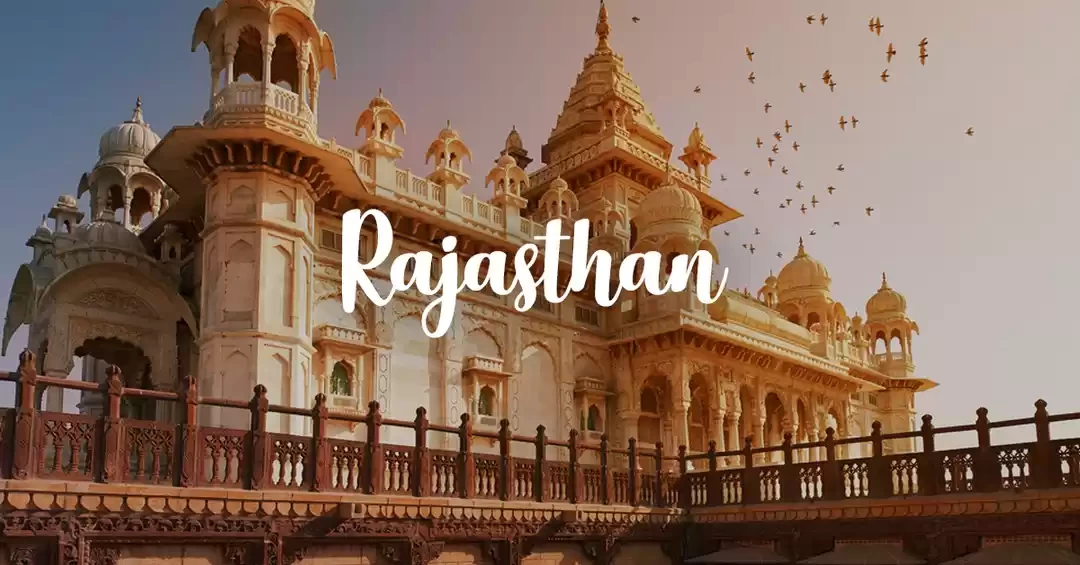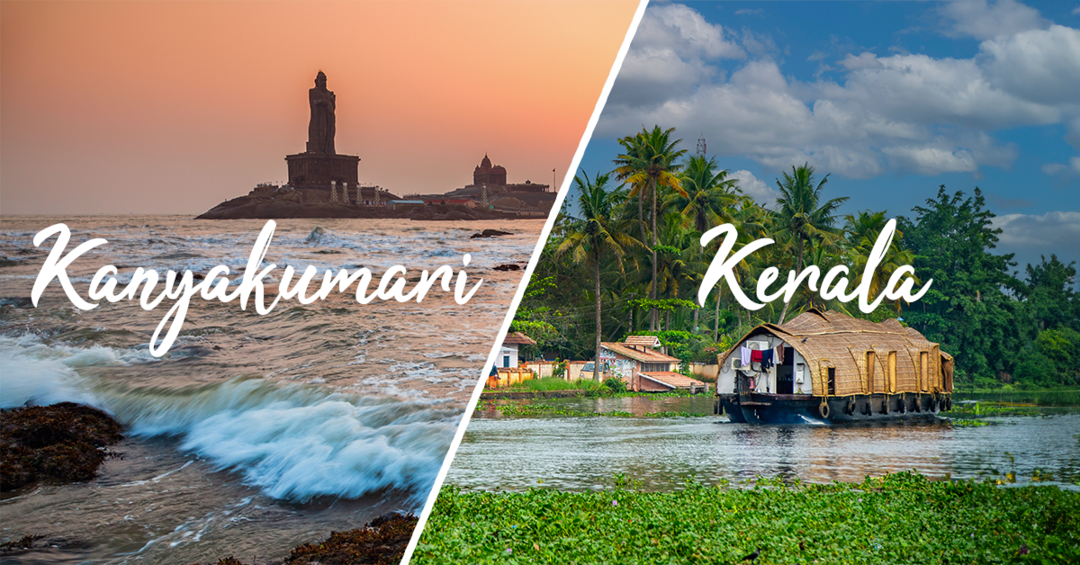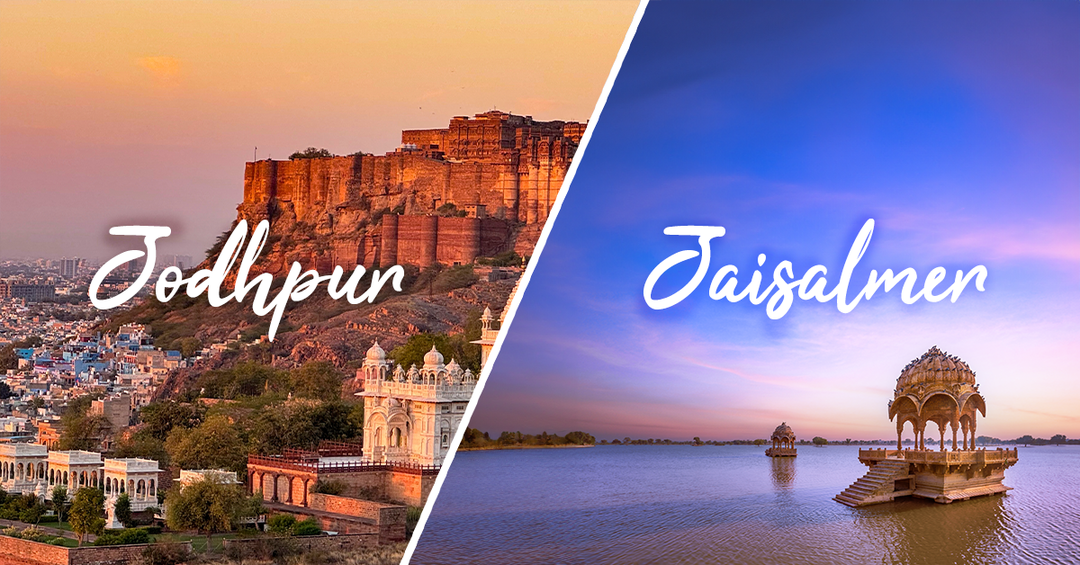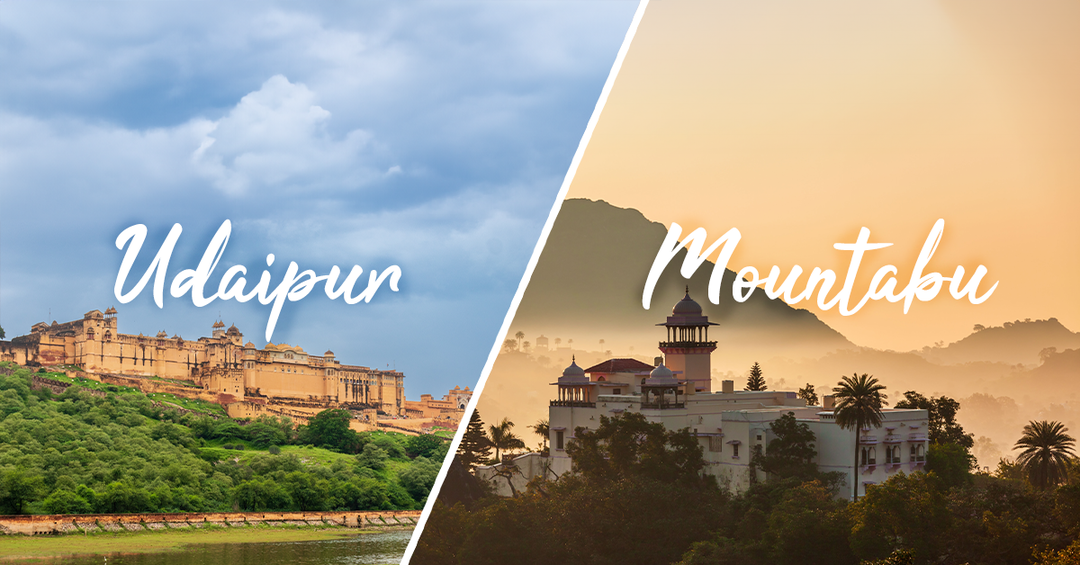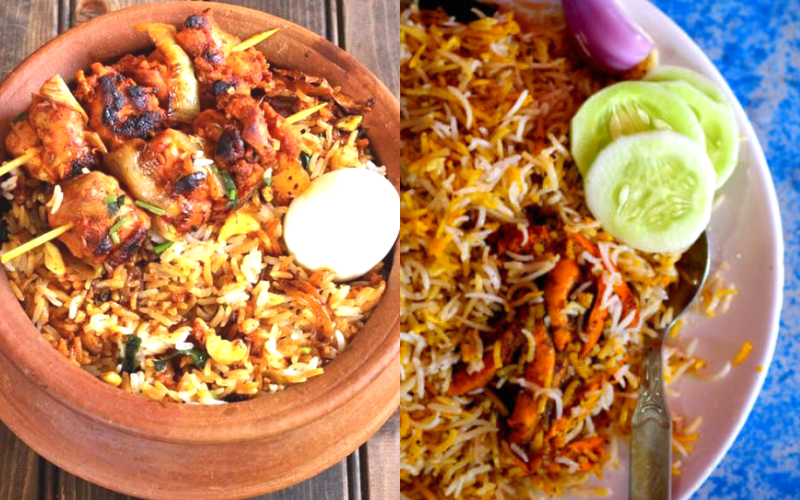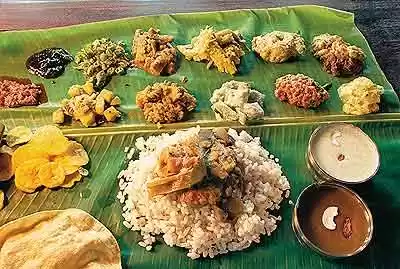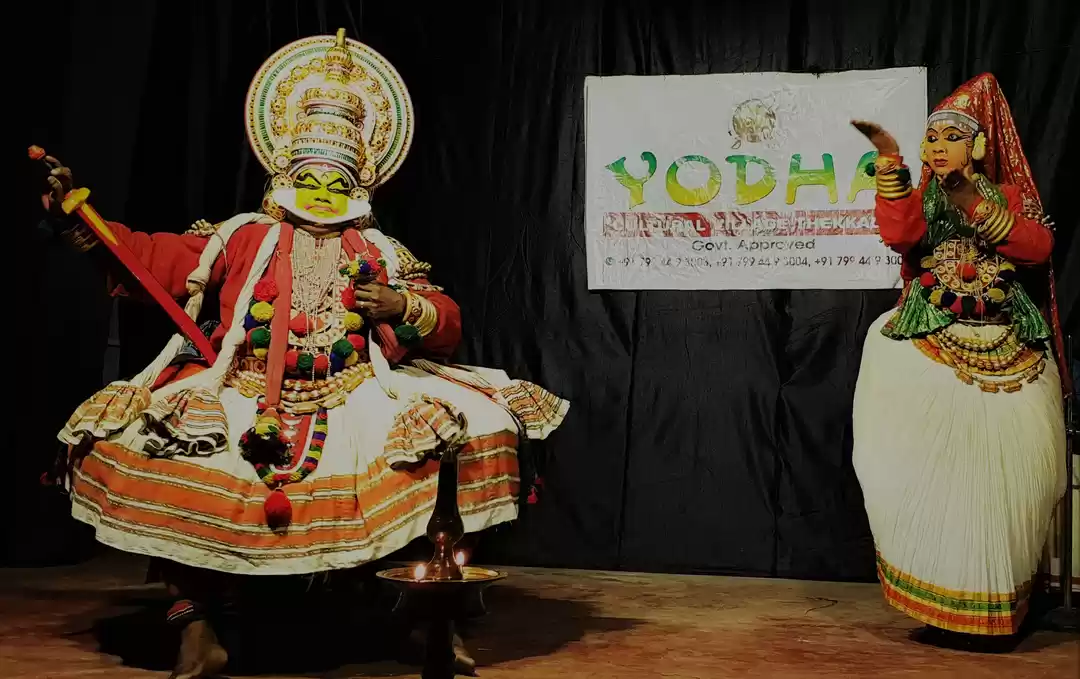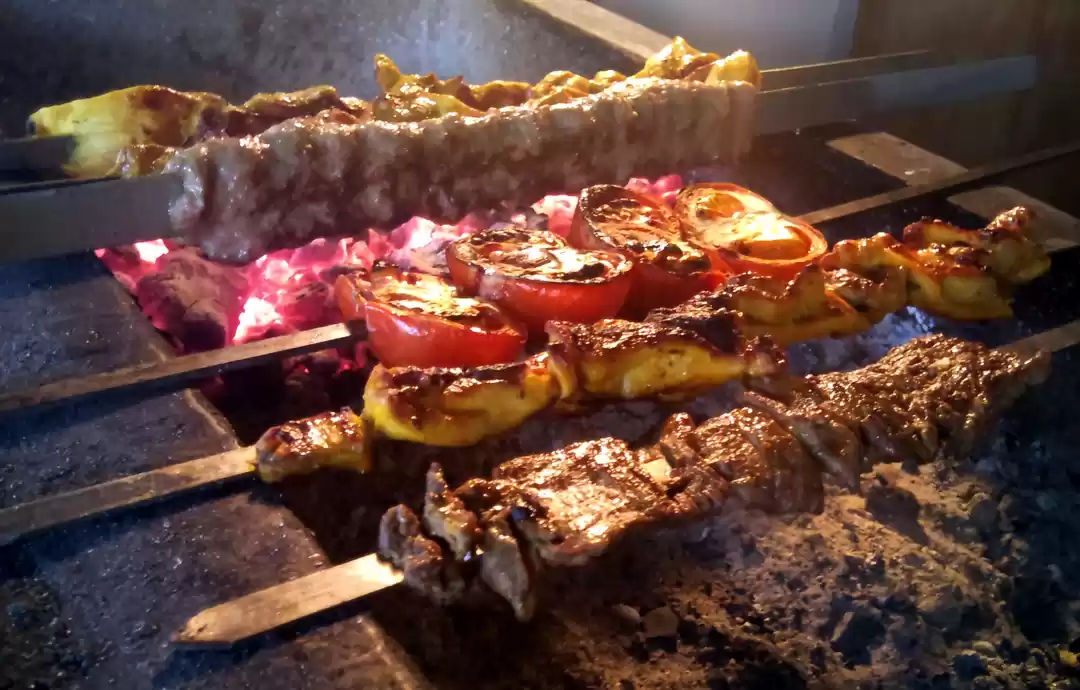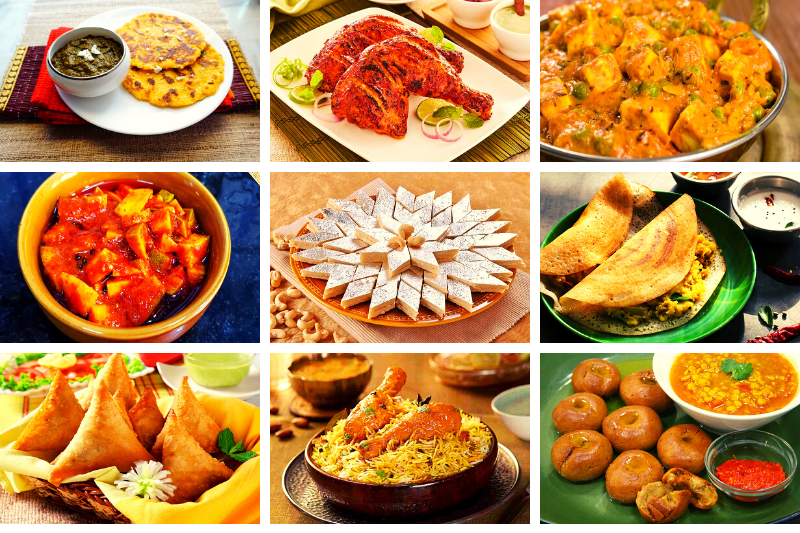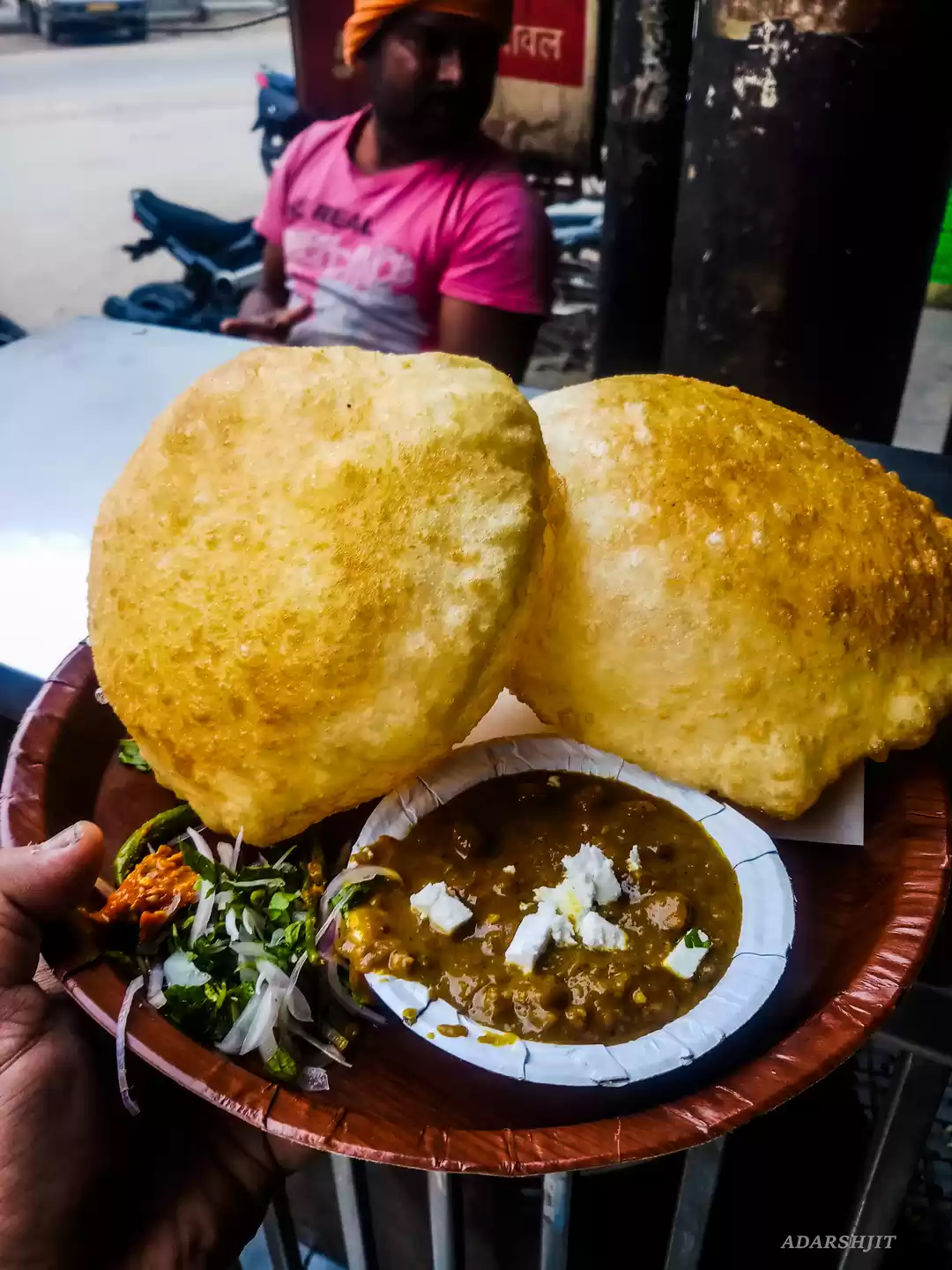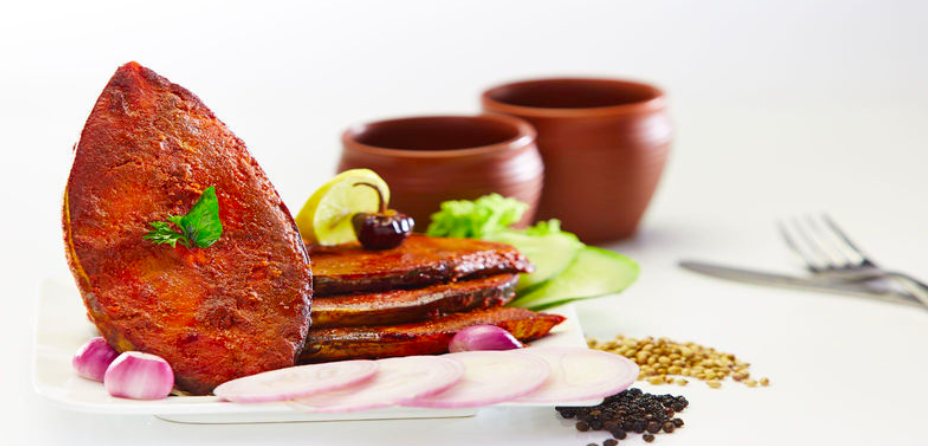A DISH THAT UNITES : BIRYANI
As far as my youngest memory goes, the only dish that I can remember from my childhood is Mutton Biryani from a famous restaurant in Kolkata called Shiraz. Also I have seen, a person is the happiest when food is served to them, and this one pot meal makes people delighted when they take the first bite of it. This dish not only resembles the rich taste and culture behind it, but also gets people together on a same platter. As in the holy month of Ramzan, when the Muslim brothers & sister break their fast after the sunset, they traditionally feast upon a platter of Biryani. Several hands can be seen hovering over a plate and sharing a common interest, i.e love for the food, Biryani.

My Grandfather used to love me like anything. Whenever my results came out in school, I used to reach home and see a box of Biryani waiting at the dinner table. No matter what my result was, Mutton Biryani was always there on the table on my birthdays and result days. The aroma of this dish and the happy smiling face of my Dadu (grandfather) made my result days even happier, though I didn’t score the best of marks in class. Little did I know in my childhood that this would be my favourite dish as I grew up.
The word Biryani is derived from the Persian word ‘Birian’, which means ‘fried before cooking’ and ‘Birinj’, the Persian word for rice. There are various theories related to the origin of this scrumptious dish. Many historians believe that biryani originated from Persia and was brought to India by the Mughals. Biryani was further developed in the Mughal royal kitchen.
There are many legends associated with the evolution of Biryani. One of the popular being the story related to Mumtaz Mahal, wife of Shah Jahan. It is believed that when Mumtaz visited the army barracks, she found that the Mughal soldiers looked undernourished. In order to provide a balanced diet to the soldiers, she asked the chefs to prepare dish with meat and rice. The dish was prepared using spices and saffron and cooked over wood fire. Another legend states that Biryani was brought to India by the Turk-Mongol conqueror, Taimur, in the year 1398. Even, Nizams of Hyderabad and Nawabs of Lucknow were known for their appreciation of this delicacy. Traditionally, Biryani was cooked over charcoal in an earthen pot.
On a personal opinion, I think Biryani’s are best prepared by Muslim families and muslim cooks or in Awadhi style I can say Bawarchi’s. Their hands, simply have magic which creates this magnificent, aromatic and obviously the most delicious dish in the world. So, without any further ado, lets dive in the depths of history behind this one pot meal and lets take you on an incredible journey in search of the best Biryani’s of India.

Let me first travel to Lucknow or Shaan-e-Awadh, the land of Nawabs. The famous hospitality term “Mehaman Navajee”, has been a part of the core culture of Lucknow. The method or the style by which the people from Lucknow treats a guest is truly beyond explanation. And when we speak about the hospitality style in Lucknow we should never forget the famous Lucknowi Biryani, which is prepared with immense pride and love. One of the oldest forms of Biryani, the Lucknowi Biryani is believed to have originated during the Mughal era. Also known as the Awadhi dum biryani and Pukka biryani. In preparing this unique dish, the first step involves making a ”yakhni” or a stock from meat that is slow boiled in water infused with spices for about two hours or more. This is the reason why this biryani is more moist, tender and delicately flavoured than other biryanis. The meat and the rice are cooked separately and then layered in a pot that is placed over a low flame and cooked by the dum pukht method. Many chefs also add a little-concentrated stock to the rice to flavor it. Each grain will look like nothing much, but when you put it in your mouth, it will (if it's done right) burst with flavors. Lucknow's chefs refined the cuisine through the use of aromatics and cooking techniques. This flavorful pot of rice, meat & aromatic spices not only brings out the true essence and culture that is in the city Lucknow but also shows the love for food that Nawabs had during their regime and it still continues till date.
Now let me take you to the Capital of Biryani that is Hyedrabad, known for the famous Hyderabadi Biryani. People in the city of Hyderabad considers, in your lifetime if you have never tasted a Hyderabadi Biryani your life is useless and there is nothing significant that you have done with your life. As a matter of fact, I also think the same way about this particular Biryani. And thank god I have tasted this Biryani. I can vouch for it, that the “Hyderabadi Biryani” is truly the king of all Biryani’s. The Khansamas (a male cook, who often also assumes the role of house steward) of Hyderabad can cook over 50 different varieties of biryani, and unlike Lucknowi biryani, hyderabadi biryani doesn’t contains the sweet touch rather it is on the sour side and heavily loaded with spices and the love of Khansama’s. The heavy dosage of chillies in this one pot meal is one of its unique features. As per Nawab Mehabob Alam Khan Shah, a Hyderabadi Biryani when prepared doesn’t compromises on these four elements i.e Gosht (tender mutton or beef), the long grain rice, good quality elaichi & pure desi ghee. The two rare biryanis that are also a part of hyderabadi biryani is the Sofiyani Biryani & Zafrani Biryani. The Sofiyani Biryani is only prepared with the help of milk, almond paste and ghee, kesar and no other spices are used, that's why the color of this Biryani is as white as it can be, and it also has a little European touch to it. While on the other hand the Zafrani Biryani has a touch of Central Asia, includes spices like zafran and red chili powder. What's unique to Hyderabadi biryani is its strong blend of flavors and spice. The dish is not only influenced by the unique flavors of South India but also enriched by foreign flavors as brought by the daughters of nobles from Morocco, Turkey, Egypt and other Middle Eastern/West Asian countries who married Hyderabadi nawabs in the olden days. When preparing the Hyderabadi Biryani, the mutton/chicken/vegetables are first marinated in yogurt, herbs, and spices and then cooked with rice over a low flame. Rice cooked this way absorbs all the spices along with the juices from the meat and vegetables. The Hyderabadi Biryani is known as Kutchi Biryani.
Okay, now let me take the fight for Biryani directly to streets of Hyderabad. In 1930s, the Kalyani Nawabs, who were the fort keepers of Basavakalyan (now in Karnataka but was part of Nizam’s territory), maintained their sprawling deori (mansion) in Hyderabad. These deori’s were home for anyone who had a petition in the Nizam’s court and had to make a trip to the city. Everyone was served sumptuous food in the evening. But things changed dramatically in the 1940s due to the Independence movement and then Operation Polo unravelled the fortune of the Nawabs. The visitor flow was constant but the flow of money wasn’t, as the lands were usurped and taken away by the government. And a tragedy happened, someone in the royal kitchens tweaked the main dish. Instead of the regular meat for the biryani, they added the much cheaper beef. Sometime in the late 1940s, when the fortunes of the Kalyani Nawabs dwindled further, one of the chefs named Dawood moved out and started selling the cheaper biryani from behind the Murgi Chowk Masjid just beyond the Charminar. While there were other biryani sellers, true to his salt, Dawood named his outlet Kalyani Biryani. And a legend was born, the “Kalyani Biryani”. Basically the truth about Beef in India is, it is not meat, it is food. A cheap source of protein in those days of soaring prices, which helped people keep their body and soul together. As the price of Kalyani Biryani is much cheaper due to use of beef and not mutton, than Hyderabadi Biryani, the legacy of the Kalyani Nawabs runs in nook & corner of the city till date.

The love between India & Pakistan is never ending, sarcastically speaking. But there are few things that both these nation love & are common i.e Cricket & Biryani. One such dish is the Sindhi Biryani, hugely popular in both the countries. It is a special meat and rice biryani dish originating from the Sindh province of Pakistan. Owing to its popularity, it forms one of the most consumed dishes of Pakistani cuisine and Sindhi cuisine. A mughlai twist to the pulao, the biryani is a celebratory dish in more ways than one. A Sindhi Biryani has its own enigma - The masala-seeped potatoes, the tangy alloo bukhara (dried plums/prunes), mint and khatta dahi (sour yogurt) render the Sindhi Biryani a different taste, it’s spicier than most regional biryanis and the proportion of the masala to the rice is a little more than of most biryanis. The cooks from the region of Sindh are known for their zesty food, their reputation for making hot dishes goes back to the 10th century, hence it is not surprising that the biryani hailing from the province of Sindh is considered the best. Between the 8th and 10th century the Abbasid Caliphs of Baghbad were at the height of their power and spent lavish amounts of money on their kitchens. The expenditure on food was matched by their gluttony, and cooks from all over the Muslim world, namely Turkey, Arabia, Egypt, gathered at Baghdad and incorporated their own local dishes into the making of one single royal dish. Even Indian cooks arrived from Sindh (the southern part of what is now Pakistan), which had been conquered by the Arabs in the year 1713. The cooks hailing from Sindh were known for their trustworthiness, ingenuity, and extremely spicy dishes. The Sindhi Biryani requires the yogurt to be khatta (sour), the red and green chillies, and whole garam masala used vigorously. The cooking method too, is somewhat different from other regional biryanis and there is no use of rose or kewra water, as is common in most mughlai dishes.
There was also another fight in the region of Sindh in regards to the best biryani. Although quite similar to the Sindhi biryani, this extremely spicy variety is made by the Memons of the GujaratSindh region. It is known as Memoni Biryani. Usually made with lamb, yoghurt, browned onions and potatoes. Memoni biryani uses less food colouring compared to other biryanis. This allows the natural colours and flavours of the various components - meat, rice and vegetables – to emerge and shine in this traditional dish.
Ambur, a town some 180km from Chennai. Here, people eat biryani for breakfast – Did I just shocked you with what I said. I was also shocked when I read about this, but later I felt this is a paradise for me. Starting your day with stomach full of Biryani, its definitely the Disneyland I want to stay in for the rest of my life. It all started with Hasin Baig, who cooked in the kitchens of the Arcot Nawabs. He brought what was once the food of the royals to the common man by opening a restaurant in his hometown, Ambur. The famous Ambur Biryani was born here in this small town. A short and thin rice variety called ‘surdas’ and country chicken is used but now its replaced with its closest match — seeraga samba (rice), which is sourced from West Bengal. Cooked in gigantic containers over wood-fired stoves, the crucial aspect behind the biryani’s consistency is the ‘dum’ — a procedure where it’s removed from fire and covered with a lid over which hot coals are placed. The recipe consists of the usual ingredients that goes into biryani — onions, tomatoes, spices such as cardamom, cloves, and cinnamon, ginger and garlic paste (ground separately to incorporate each ingredient’s flavour), red chilli paste, salt, rice (par boiled) and meat. Ambur biryani is served usually orangishpink in colour, the rice is mildly spiced, the meat, a tad spicier and is always cooked to perfection. Its traditionally accompanied with 'dhalcha,' a sour brinjal curry and pachadi' or raitha, which is sliced onions mixed with plain curd, tomato, chillies and salt.
Heard about the region called Malabar region also known as Kerala. In mythology it is also known ‘Gods own country’. Indeed, it can not be false. I truly think the taste and richness of the Thalassery Biryani or better known as the Malabar Biryani is created by gods themselves. Thalassery biryani is a cultural embodiment and is reminiscent of foreign influences in Malabar, it is a reminder of the Mughal-Arab cultural influence in North Kerala due to the trade that lasted for many centuries before the 1900s and the emigration to the Middle East of locals from the 1970s onwards. Biryani is an exotic dish of Mughal origin, but this variant is an indigenous recipe of Malabar. It is a symbol of the cultural amalgamation of Mughal and Malabari cuisines. The Mughals brought the cuisine of biryani from Samarkand, and later variations of biryani developed in different parts of India. Thalassery biryani may have come to the region because of the influence of the Muslim rulers of Mysore and Arkot. The main difference between Thalassery biryani and other biryanis is that it uses only Khaima/Jeerakasala rice - a short-grain, thin rice which is also called biryani rice in Kerala. The word biryani in Kerala has a different pronunciation i.e in the local dialect-Malayalam, it is called biri-yaa-ni instead of bir-yani. Thalassery biryani is an ample insignia of the Islamic cultural influence in the region. The dish is a traditional Mappila or Malabar cuisine. Ancient written records— except for a few treatise by historians citing the origin of Mappila's (Malabar Muslims) are rare. The mythology about the conversion of the last Chera Emperor (Cheraman Perumal) Rama Varma Kulasekhara Perumal to Islam from Mahodayapuram (Kodungallur) by Malik Deenar and subsequent conversion of Perumal's sister and nephew residing in Dharmadam(a village located north of Thalassery) is generally believed to be the origin of Islam in North Malabar.
The Kaima/Jeerakasala rice does not need pre-soaking, water is only used to clean the rice. After adequate boiling there should not be any water remaining in the cooking dish as it should be evaporated completely. This is a major difference from other rice preparation, in which water has to be drained off after cooking. The blending of ghee rice with masala is done by dum. The biryani masala and ghee rice are arranged in layers inside the handi. Meat is cooked with masala on slow fire; it is layered with rice and the lid of the container is sealed with maida dough or a loin cloth. Hot coal or charcoal is placed then above the lid. Thalassery biryani is a Pakki-Biryani. There are two types of biryani; "Pakki" and "Kacchi", In Pakki style, the ghee rice is added to the fully cooked chicken-masala mix and then cooked by the "dum" process; where as in Kacchi style the ghee rice is added to the half cooked chicken and then cooked till it is fully cooked or the dum process is used. Specially dressed chicken is poured into the masala dish. The chicken is slowly cooked in the masala, and gets blended well with the juices of masala and spices. The Thalassery biryani recipe has additional distinct features, unlike other biryanis it is not oily because of the dum process used for preparation. A unique blend of spices is added and the Kaima rice also adds a unique flavour. No oil is used to make the chicken, which is added raw into the masala mix. Common side dishes served with Thalassery biryani are Coconut-Mint chammandi (Biryani Chutney) and raita. After the meal, hot lime-black tea (known among the Muslim community as 'Sulaimani') is served this adds a special taste after the main course and is an aid to digestion. Lime tea is a common in the Malabar region, especially with a rice based maincourse.
“I felt love is in the air, when I got a whiff of the appetising Bhatkal Biyani” – Governor of Karnataka. A town in North Canara district of karnataka, Bhatkal lies on NH66 which runs between Mumbai & Kanyakumari, is the den for the famous Bhatkali Biryani. Bhatkali Biryani is an integral part of the Navayath cuisine. Its origins are traced to the Persian traders who left behind not only biryani but a variation of kababs and Indian breads. In Bhatkali biryani the meat is cooked in an onion and green chili based masala and layered with fragrant rice. It has a unique spicy and heady flavour, and the rice is overwhelmingly white with mild streaks of orange. Though similar to those in Thalassery, this biryani differs with lingering after-notes of mashed onions laced with garlic. A few chillies and spices littered with curry leaves lends a unique flavour to Bhatkal biryani. No oil is used. If you are calorie-conscious, then Bhatkal Biryani will surely gladden your heart. The pungency of the spices and the mild sweetness of the excess onions often with bites of tender chicken will take you to another dimension itself. Eating Bhatkal Biryani can be fulfilling only if you use your fingers to meld the morsels with the middle-layer of masala and chicken. The resultant fusion makes it special, but if you eat just the rice without blending it in, then it can come across as a bland product.
The exaggeration of mashed onions laced with garlic, chillies and spices along with curry leaves does lend a unique flavor to Bhatkal Biryani, and it is a taste that may not fit into the conventional grooves associated with other biryanis. Perhaps this taste lends a special aura to Bhatkal Biryani that is had, along with salad, pickles and (hold your breath), mashed onion masala! You just cannot keep onions away from Bhatkal Biryani, it seems!
There are people who travel 20km everyday just to taste a particular type of biryani. Yes! There is one such biryani which makes people go crazy or I would say, make their palate’s go crazy, is the Dindigul Biryani. This biryani is always slow-cooked over firewood. Once the rice is semi-cooked, it is transferred to the dum style — hot coal is placed on the lid of the vessel so that heat spreads evenly on all sides; the meat inside becomes melting soft and succulent and the grains of rice stay separate. The seeraga samba rice used in Dindigul biryani absorbs all the flavors of the ingredients. Each grain of rice is uniformly marinated in the masalas. And since the meat added to the biryani is always more than the quantity of rice, the seeraga samba soaks in the taste of all the spices and flavours of the meat. The strong aroma of cloves and cardamom, and the accompanying raita made with rich and creamy curd is a value addition to the Dindigul Biryani. Traditionally Dindigul biryani was prepared with the Kamarajar Lake water from Athoor. It was believed that it enhanced the flavour of Dindigul biryani.
Now lets talk about some ‘Bears’…just kidding. Bears do have relevance with biryani’s, but bear used here has a completely different meaning. I am speaking about none another than Beary Biryani. Beary is a community concentrated mostly along the southwest coast of India, in coastal Dakshina Kannada, a district in south Indian state of Karnataka. The Beary’s are mostly traders and hold an important place among the other coastal Muslim communities. This biryani is also known as the cousin of Mangalorean Biryani. But, unlike the Mangalorean biryani Beary biryani has a distinct flavor of fennel, poppy seeds and even coconut paste is added while preparing this biryani. The procedure of making this biryani is same like any other biryani i.e dum cooking method.
Lets travel directly to Delhi – The heart of India. Chill guys…I wont be talking about politics. Rather I’ll be speaking about the famous Delhi Biryani also known as “Achaari Biryani” or “Shahjahanabad Biryani” or “Nizamuddin Biryani”. The Delhi version of the biryani developed a unique local flavor as the Mughal kings shifted their political capital to the North Indian city of Delhi. Until the 1950s, most people cooked biryani in their home and rarely ate at eateries outside of their homes. Hence, restaurants primarily catered to travelers and merchants. Any region that saw more of these two classes of people nurtured more restaurants, and thus their own versions of biryani. This is the reason why most shops that sold biryani in Delhi, tended to be near mosques such as Jama Masjid (for travellers) or traditional shopping districts (such as Chandni Chowk). Each part of Delhi has its own style of biryani, often based on its original purpose, thus giving rise to Nizamuddin biryani, Shahjahanabad biryani, etc. Nizamuddin biryani usually had little expensive meat and spices as it was primarily meant to be made in bulk for offering at the Nizamuddin Dargah shrine and thereafter to be distributed to devotees. A nondum biryani, using a lot of green chillies, popularized by the Babu Shahi Bawarchi shops located outside the National Sports Club in Delhi is informally called Babu Shahi biryani. Another version of Delhi biryani uses achaar (pickles) and is called Achaari biryani.
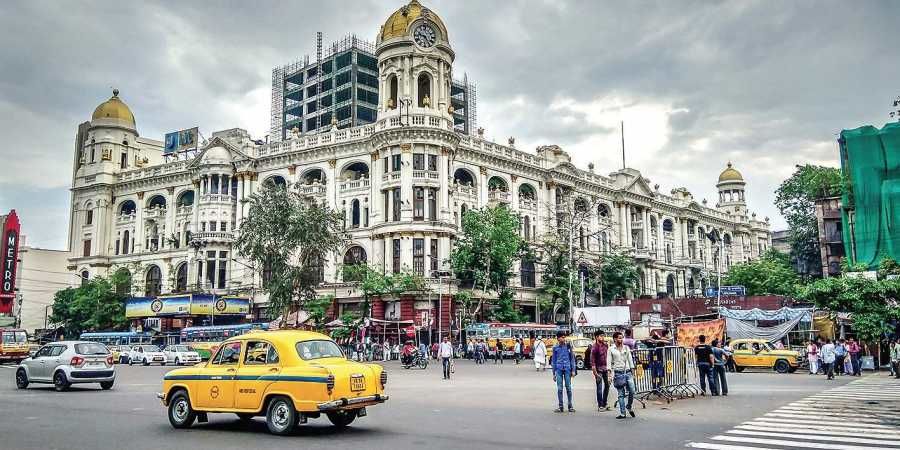
Finally back to where I belong, Kolkata - the city of Joy. Where my soul belongs, where my heart belongs and the place when I first saw her, I fell in love with her – The Kolkata Biryani. Yes, I’ll brag a little long about this biryani than any other, and you know it why. The history of Calcutta Biryani is as old as the city is. Back in May 1856, Wajid Ali Shah, the 10th Nawab of Oudh, came to what was then Calcutta with much misery in his heart. The British had confiscated his lands, his treasury , his comfort, they had even banished him from his beloved Lucknow. On the outskirts of Kolkata, in Metiabruz, the Nawab came and settled and rebuilt a replica of his beloved capital, complete with grand Islamic structures, his beloved parikhana (school) of damsels, a zoo of exotic animals, kite-flying, kabootarbaazi and yes, food from the royal kitchens. But the purse strings had been tightened. So the Nawab's enterprising chefs thought of an ingenious way to deal with the shortage of meat. They added potatoes and eggs to the royal dish and thus was born the Kolkata biryani. The only difference between Awadhi biryani and the Kolkata biryani is that the latter has aloo (potato). When Wajid Ali came to Kolkata, he did not have enough funds to feed his entourage in an elaborate way . But his culinary heritage was his biggest treasure and he was both “khaane ke aur khilaane ke shaukeen”. So, after a few years in Kolkata, the potato was introduced in the biryani. The vegetable had been brought to India by the Portuguese and was considered a novelty, since it was imported. It was also quite expensive, though not as much as meat. Apart from bringing down costs, the potato also helped to maximize the volume of the dish. The biggest difference of Calcutta biryani to any other biryani is the use of mustard oil, which is very popular in Bengal, to cook the korma and other bengali dishes.

To get rid of the pungency of mustard oil, it has to be smoked or burnt till the oil completely turns dusty-grey in color. The rice has to be soaked in water for some time, before it is cooked. Then, when the meat is medium soft, the potatoes have to be fried golden brown and the rice half-cooked, and then it's time to put the biryani on dum. Some of the key elements in Calcutta Biryani is home made garam masala, mixture of saffron strands, milk, kewra water and ghee. Then the most cruicial part comes i.e “Biryani ko dum dena” (putting it on Dum).
Once the lid is removed the heavenly aroma makes you feel that “THIS IS IT..!!”, you are above all, it makes you feel relaxed and calm. The biryani must be served along with boorani, a type of raita or ghol, that is made from mint leaves, green chillies, rock salt, roasted cumin and curd as it acts as a palate cleanser. My love for Biryani will never end as this one pot meal shows the culture, the essence, the values, the ingredients and especially the bonding that the Indian mother land has among its people and across all the states.
I just want to complete this journey by saying:
“Me & Biryani,
Biryani & me.
A never ending love story.
We always find each other, Anywhere in the Country.”






